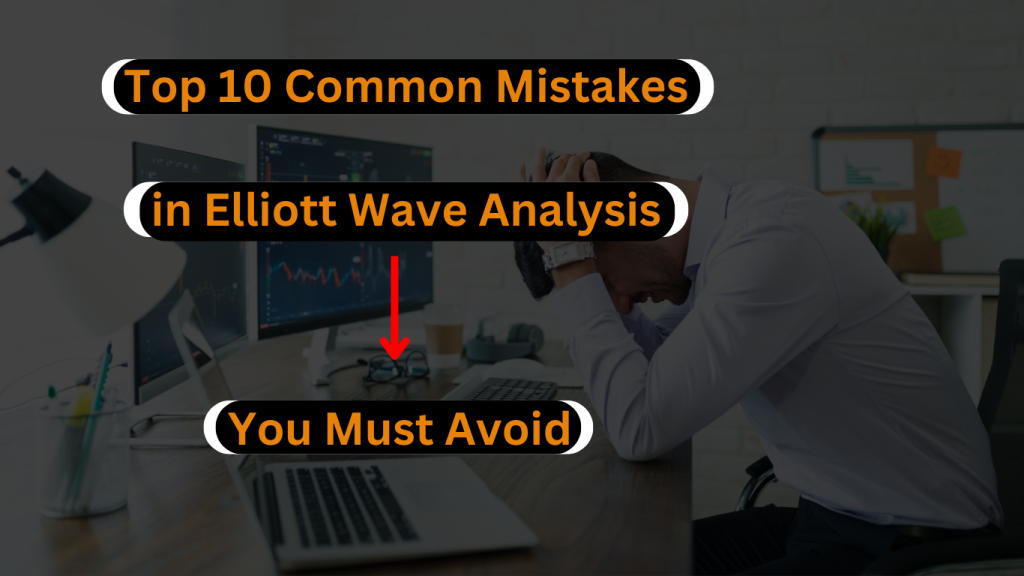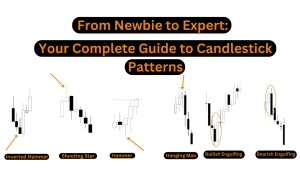Elliott wave analysis is a crucial part of technical analysis. It helps traders and investors understand market trends and potential price changes. Essentially, it says that market prices follow specific patterns called waves, which come from how people in the market think. Knowing Elliott wave analysis is really important for anyone dealing with financial markets.
The Top 10 Common Mistakes in Elliott Wave Analysis You Must Avoid!
In this article, we will take a look at the Top 10 Common Mistakes in Elliott Wave Analysis You Must Avoid!
Mistake #1: Misidentification of Wave Patterns
The main problem in Elliott wave analysis is misunderstanding wave patterns. New analysts can get confused by the complexity of counting waves, which can lead to wrong predictions and bad trades. It’s important to tell apart impulse waves, which go with the main trend, from corrective waves, which go against it for a short time.
Mistake #2: Making Wave Analysis Too Complicated
One common mistake people make is making wave analysis too complicated. This leads to confusing wave counts and ignoring the main principles of Elliott Wave Theory. Keeping things simple is better because complexity just makes things harder to understand. By sticking to the basic rules of Elliott Wave Theory and keeping things simple, analysts can understand the market better.
Mistake #3: Not Paying Attention to Wave Patterns and Rules
Not paying attention to the structure of wave patterns and Fibonacci ratios is a big mistake in Elliott wave analysis. Waves follow certain rules and proportions that show how the market behaves. Ignoring these rules makes the analysis less accurate and can lead to bad trading decisions. It’s really important to stick to these guidelines carefully to get the most out of Elliott wave analysis.
Mistake #4: Letting Feelings and Personal Opinions Affect Analysis
Letting emotions affect analytical decisions can mess up wave analysis. It makes judgment cloudy and distorts how we see the market. To deal with this, analysts need to be disciplined and objective. They should focus on facts and logical thinking instead of emotions.
Mistake #5: Not considering the bigger picture
A. Forgetting about the overall market situation:
One common mistake in Elliott Wave analysis is not thinking about the broader market context. While it’s important to look at individual wave patterns, it’s also crucial to understand the bigger economic picture and how the market is behaving. Things like geopolitical events, economic indicators, and central bank policies can really affect wave patterns and how the market moves.
B. Ignoring important factors affecting wave patterns:
Another mistake is ignoring fundamental factors that can affect wave patterns. Fundamental analysis works hand in hand with Elliott Wave Analysis by giving insights into the basic economic factors driving market movements. Not paying attention to fundamental analysis can mean missing important details in wave patterns and making trading decisions based only on technical factors.
C. Adding context to Elliott Wave analysis:
To avoid this mistake, analysts should include context in their Elliott Wave analysis. This means looking at both technical and fundamental factors to get a better understanding of market trends and make smarter trading decisions. Taking this broader approach makes Elliott wave analysis more accurate and reliable.
Mistake #6: Not Managing Risk Properly
A. Using too much leverage based on wave predictions:
Thinking wave analysis predictions are always right can lead to using too much leverage, which is risky. Even though Elliott wave analysis is helpful, it’s not always perfect, and markets are uncertain. Traders should be careful and not risk too much based only on wave predictions.
B. Not using stop-loss levels based on waves:
Not having stop-loss levels based on wave counts can lead to big losses. Stop-loss orders close trades automatically if prices go against what the trader expects, which limits losses. Using stop-loss levels based on wave analysis helps manage risk and protect money.
C. Using good risk management with wave analysis:
To lower risks, traders should focus on good risk management along with wave analysis. This means choosing the right trade sizes, having diverse portfolios, and using stop-loss orders to manage risks. By using strong risk management, traders can protect their money and do better overall.
Mistake #7: Relying Solely on Elliott Wave Analysis
A. Using only the Elliott Wave for trading:
While Elliott wave analysis is useful, relying only on it for trading isn’t enough. Markets are complex, and one method can’t capture everything. Traders should also use other tools like moving averages, oscillators, and volume analysis to understand the market better.
B. Adding more tools to wave analysis:
Adding extra tools confirms Elliott Wave signals, making trades more reliable. Each tool shows different things about the market and can support or challenge wave analysis. Using a mix of tools helps traders make better decisions.
C. Making Elliott Wave part of a bigger strategy:
For the best results, traders should include Elliott wave analysis in a broader trading plan. This plan should have different methods, risk management rules, and ways to execute trades, all based on the trader’s goals and how much risk they’re willing to take. By using a mix of strategies, traders can deal with any changes in the market and trade more successfully.
Mistake #8: Impatience and Lack of Patience
A. Expecting quick results from wave analysis:
One mistake is thinking that wave analysis gives instant results. Markets change a lot and take time to show clear patterns. Traders shouldn’t rush into trades based on early signals. Instead, they should wait for confirmation before acting.
B. Not waiting for confirmation of wave patterns:
Being patient is important in Elliott wave analysis. Waiting for confirmation helps avoid wrong signals and reduces the risk of making trades too soon. Traders should be patient and wait for patterns to show clearly before making decisions. Acting too quickly without confirmation can lead to losses and hurt the accuracy of wave analysis.
C. Being patient and disciplined in Elliott Wave analysis:
It’s crucial for successful Elliott wave analysis to be patient and disciplined. Traders should stick to their plans, be careful when the market is uncertain, and avoid making impulsive decisions. By staying patient and disciplined, traders can make their wave analysis more accurate and get better results consistently.
Mistake #9: Not Learning from Mistakes
Mistake #10: Neglecting Market Dynamics
A. Ignoring how people feel about the market:
If we don’t pay attention to market sentiment and how investors behave, we might miss chances and get wave analysis wrong. Market sentiment often makes prices change quickly, affecting wave patterns and trends. Traders should use market sentiment indicators, like surveys and indices, alongside Elliott Wave Analysis to make predictions more accurate.
B. Not thinking about outside factors affecting wave patterns:
Things outside of the market, like political events or economic news, can really change wave patterns and how the market acts. Traders need to keep an eye on these outside influences and adjust their wave analysis accordingly. Bringing these outside factors into Elliott wave analysis helps give a better overall picture of market trends and makes predictions more precise.
C. Adding how the market works into Elliott Wave analysis for better guesses:
To avoid this mistake, analysts should think about how the market behaves in their Elliott Wave analysis. This means looking at both inside and outside factors that affect the market, like supply and demand, how people feel, and big economic trends. By including all of these factors, analysts can make their wave analysis more accurate and make better decisions.
Conclusion and Key Takeaways
In conclusion, it’s important to avoid common mistakes in Elliott Wave Analysis for successful trading. By recognizing and fixing mistakes like not looking at the bigger picture, not managing risks well, relying too much on Elliott Wave alone, being impatient, not learning from mistakes, and ignoring how the market works, traders can get better at analyzing and making smarter decisions. By being disciplined, patient, and looking at everything together, traders can feel more confident and do better in the markets.












